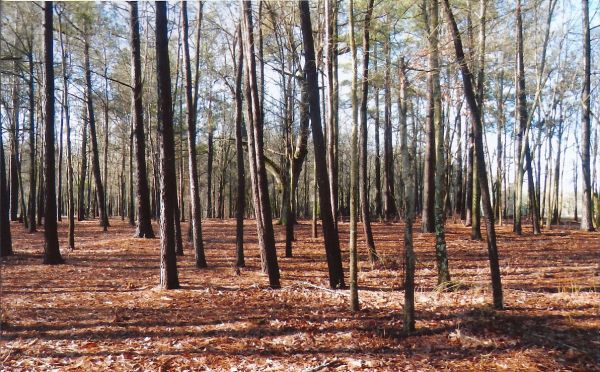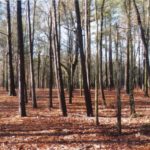
At the recent meeting of the Southeast Deer Study Group in South Carolina, the talk among the deer researchers and biologists continued to focus on coyotes and fawn depredation, the lack of fawn recruitment in various herds and the continuing spread of CWD in this country.
I attended the meeting in late February in Greenville, S.C. This is the annual meeting of deer researchers and biologists who gather together to present their recent research and management work on white-tailed deer throughout the Southeast. It appears that many universities are looking at fawn survival and recruitment, and there were several presentations regarding the fawn cover requirements needed by fawns to escape predation. Habitat with tall vegetation near shrubs or thickets provides the young deer with the necessary cover to conceal them from predators. The taller vegetation also provides good shade, protecting the fawns from high temperatures.
Good habitat is an absolute must for a sound deer management program. The habitat must provide the nutritional needs of the herd, as well as providing escape cover and the necessary fawning habitat. If your habitat has the appearance of a forest like that in the photograph, your habitat is in desperate need of some applied management work, mainly a good timber cut. This park-like forest is providing very little in the way of year-round nutrition. Yes, it does provide hard mast for the deer, but once the acorns are gone, so is the nutrition. Deer need habitat that meets their needs during the entire year.
The photo also shows that there is no escape cover habitat for the deer. In Louisiana, a lot of pine plantation habitat looks similar to this, and if your habitat is like this, your deer density is no doubt low — along with your annual deer harvest. No amount of feeders or food plots will compensate for the deer habitat lacking under these forest conditions.
Coyotes are being blamed for the lack of fawn recruitment in the Southeast, and it was interesting to hear someone with another view of this issue. This individual stood up during discussion time and said he had a good, healthy deer herd on good habitat with many coyotes and he just cannot harvest the number of deer from the habitat needed to keep the herd in balance with the habitat. He was tired of hearing all this coyote talk (he used the term “coyoted-up”) and wanted to hear some discussion on what he could do to achieve the necessary deer harvest.
Habitat that is well managed through periodic selective cuts probably provides the escape cover deer need to help lessen coyote depredation. This habitat is probably producing the other creatures — rats and mice — that the coyotes are regularly feeding on, which also lessens the food demands of coyotes.
The Department of Wildlife & Fisheries and the University of Georgia are currently conducting a study in Tensas Parish regarding fawn depredation and recruitment. This study will also be able to see what impact bears are having on our deer herds.
Several presentations dealt with the nutritional demands of both bucks and does in the fall. Deer that have adequate sources of nutrition in the fall build up fat reserves that allow them to spend more time with breeding activities and less time trying to find food for body maintenance during the rut. Does that are physically fit from the fawn-rearing process will cycle and breed sooner than does that come out of the fawning season in a weakened condition and have to spend time finding food and getting physically fit for the breeding season.
Again it all goes back to habitat management — maintaining a diverse habitat that has both browse, and hard and soft mast available for the deer during the different seasons. This is where the food plot and feeder supplementation can have an important impact on your deer herd. These activities should supplement your overall habitat program rather than being the habitat program.
It was interesting to hear a presentation regarding spotlight counts and how their study points out that such counts are pretty much worthless for managing deer populations. While providing some information, their ability to provide the information needed to estimate population density is a waste of time.
In Texas, such counts are part of the program and are basically used to determine the population of a ranch and determine harvest numbers. Several years ago, I visited the Hill Country and we did such a survey on a ranch, and after we did it I made the statement that I would look at the other parameters — past harvests and the physical condition of the deer, actual habitat conditions, etc. It was apparent to me after looking at the habitat and then doing the survey that the survey could in no way get a reasonable count of herd numbers. There was just too much dense habitat where deer could hide and not be seen on the survey.
The ranch owner did not like the comments and pretty much believed the survey count was right on target and that they were harvesting enough deer. My last comments were simply that you better not stop your feeding program or you might be in trouble.
Chronic wasting disease (CWD) continues to be a subject of discussion. Texas, Missouri, West Virginia, Virginia and Maryland are southeastern states that have been dealing with this problem. You may have recently seen that New York now has the disease, and that a wild moose was hit on a road in Canada and was diagnosed with CWD.
Of course, Wisconsin has been dealing with the problem for years. The initial response of that state agency was to make an effort to eradicate all animals with the disease, and after several millions of dollars it has been decided that this is impossible. The active response of Wisconsin has now become somewhat of a passive response, in that the state will try to live with the disease; it will continue to monitor and do what it can, but it became all too apparent that CWD was not going away.
The current USDA map of the distribution of CWD in wild cervids is interesting. The major region is in Colorado, Wyoming, Utah, North and South Dakota, and Kansas. Then there is that region in Wisconsin and northern Illinois. There is a small area in West Texas and New Mexico; that portion of Northeast West Virginia where it borders Maryland and Virginia. Then there are small flyer areas in the states of New York, Missouri, Minnesota and Montana.
Louisiana does not have a problem, and the surrounding areas of East Texas, Arkansas and Mississippi are also disease free — right now, anyway.
I have seen e-mails regarding the possible importation of deer into Louisiana from a CWD facility. The state Department of Agriculture and Forestry is responsible for the deer-farming program in our state, and it seems that some deer have been shipped in but did not reach their intended destination and no one at the Ag office knows where they might be.
Not real comforting to know that the state agency in charge of deer farming in our state doesn’t know what is going on with their program.
The deer-farming industry in this country is considered to be a growing threat by many deer managers and biologists to our free-ranging deer populations. The lack of regulation and accountability in the different programs is a major concern, and this is probably how these small infected areas in some of the states came about.
Our LDWF continues to test for CWD in the state, but with the Ag Department having authority over the deer-farming program, their hands are tied when it comes to protecting our native deer from an industry that is poorly managed and regulated.
While you may not have heard about these imported deer, you should have heard about the Department of Health going in and destroying processed meat from wild deer that had been donated to the Hunters for the Hungry Program.
How idiotic is that?
Hopefully steps are being taken to make sure this does not happen again. What a great program this has been, providing good nutritional meat for those who are in need.
My friends at Istrouma Baptist Church came to Camp David for our second annual Turnips for the Hungry event, and we picked and delivered over 1,600 pounds of turnips to the Greater Baton Rouge Food Bank, which distributed the turnips across 11 parishes.
Louis and Ginger Green won the coveted Silver Turnip Bowl for their efforts during the two weekends of turnip pickin’. While it doesn’t seem like much, scripture says that just a cup of water given in Jesus’ name means a lot. Whatever you have, share it with those who do not have; it does make a difference.




